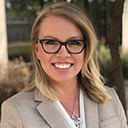
Schedule a Mammogram
Breast Cancer Risk Factors
A risk factor is anything that increases your chance of developing a disease or condition such as breast cancer but does not necessarily mean that you will develop a disease or condition. While most risk factors for breast cancer are out of your control, there are still things that you can do to lower the risk of having breast cancer.
Breast Cancer Risk Factors You Cannot Change
Gender
Being a woman is the greatest risk factor in developing breast cancer. This is because the women’s breasts are constantly changing and growing due to the hormones estrogen and progesterone. Men can also develop breast cancer, but the risks are significantly low because their breasts don’t have much activity.
Age
The risk of developing breast cancer increases with age. Most breast cancers are diagnosed after the age 50. When in your 30s, the risk of getting breast cancer is 1 in 228 or 44%. As you age, the percentage rate increases. The greatest mortality reduction, the most lives saved and the most life years gained occur with yearly mammography starting at age 40.
Genetic Mutation
Breast cancer is thought to be hereditary, which means it results directly from gene mutations from parents. BRCA1 or BRCA2 are two different genes and the most common cause of hereditary breast cancer. In normal circumstances, these genes help in producing proteins which repair DNA damage. However, mutations of these genes can cause abnormal cell growth which causes cancer.
Reproductive History
Early menstrual period, before age 12, and late menopausal period, after age 55, causes women to be exposed to hormones longer, which increases the risk for breast cancer.
Dense Breasts
Breasts are made up of fatty, fibrous and glandular tissues. Denser breasts means that the breast has more fibrous and glandular tissues than fatty tissues. This makes the breast appear denser in mammograms. Women with dense breasts have a higher risk of about 1.5 to 2 times than that of the women with average breast density. Denser breasts are also harder to examine in mammograms than average density breasts.
History of Breast Cancer or Certain Noncancerous Breast Diseases
Women who have had breast cancer once have an increased risk of getting breast cancer a second time. Noncancerous diseases that can increase risk for breast cancer includes atypical hyperplasia or lobular carcinoma.
Family History of Breast Cancer and Ovarian Cancer
The risk of developing breast cancer increases when a female first-degree relative or multiple females in the family tree have breast cancer. A male first-degree relative with breast cancer also can increase the risk of having breast cancer.
Previous Treatments Using Radiation Therapy
People who are treated with radiation therapy in the chest for another cancer increases the risk of developing breast cancer. Teenagers or young adults who are treated with radiation therapy when the breast is still developing are at a significantly higher risk of developing cancer. Women who received radiation therapy after 40 do not have an increased risk of developing breast cancer.
Drug diethylstilbestrol (DES) Exposure
The drug diethylstilbestrol (DES), an estrogen-like drug, was given to pregnant women in the 1940s to early 1970s because it was known to lessen the risk of miscarriage. Women who took this drug have a slightly higher risk of getting breast cancer.
Race
White women have a slightly higher risk of developing breast cancer than African-American women.
Pregnancy and Breastfeeding
Pregnancy and breastfeeding reduces the number of menstrual cycles in a lifetime, which reduces the risk of getting breast cancer. Changes and growth of the breasts are connected with the hormones estrogen and progesterone. For women who breastfeed, the risk lowers especially if they continue to breastfeed in 1.5 to 2 years.
Breast Cancer Risk Factors You Can Change
Weight/Diet
Fat tissues are the source of estrogen after menopause. Having higher fat tissues means having higher estrogen levels, which can increase the risk of breast cancer.
Exercise
The American Cancer Society suggests 45-60 minutes of exercise five or more days a week. Engaging in physical activity regularly decreases the risk of getting breast cancer.
Alcohol Consumption
Alcohol limits the liver’s ability to control blood levels of the hormone estrogen, which increases the risk of breast cancer.
Smoking
Smoking is associated with a small increase in developing breast cancer.
Recent Oral Contraceptive Use
Recent oral contraceptive use increases the risk of developing breast cancer. Women who stopped using oral contraceptives more than 10 years ago do not have any breast cancer risk.
Stress and Anxiety
There is no clear proof that stress and anxiety increase the risk of getting breast cancer, but they can affect the quality of life. A better quality of life helps strengthen the immune system, which decreases the risk for a number of diseases.
Breast Cancer Risk Factors with Unclear Effects
Chemicals in the Environment
In theory, chemicals in the environment that have estrogen-like properties increase the risk of breast cancer. These substances are found on plastics, cosmetics, personal care products, pesticides and polychlorinated biphenyls (PCBs). Research about the connection of these substances and breast cancer is still ongoing.
Night Shift Work
People who work at night might have higher risks of developing breast cancer. This is still an active area of research, but in theory, the inconsistency of the melatonin production may increase the risk for developing breast cancer.
Being Taller
Taller women have greater risk of developing breast cancer than short women. The reasons are not clear, though it may have to do with nutrition, growth and hormonal and genetic factors.
Though the incidence of breast cancer increases substantially around age 40 and even earlier for high-risk women, there is no established age for women to stop screening. Women should continue breast cancer mammography screening as long as they are healthy. Early detection and lifestyle changes may reduce the risk of disease and offer time to treat it effectively. Screening tests are done to detect potential health disorders or diseases in people who do not have any symptoms.
Take control. Schedule a screening.
Sources:
American Cancer Society
BreastCancer.Org
Centers for Disease Control and Prevention





